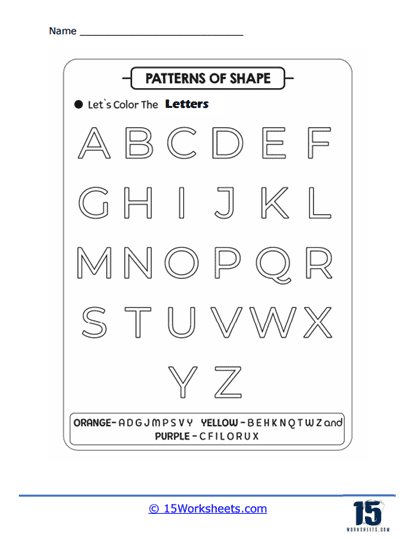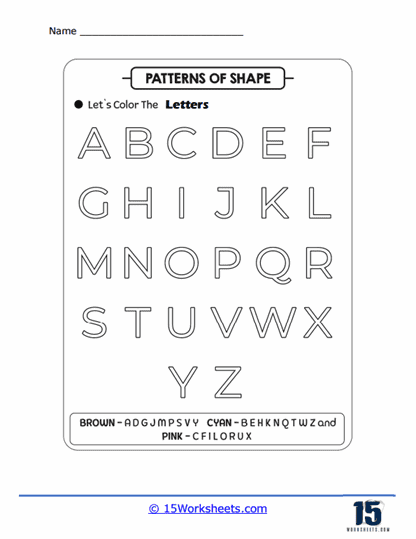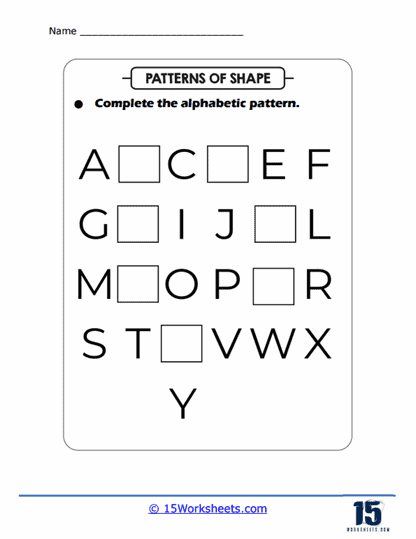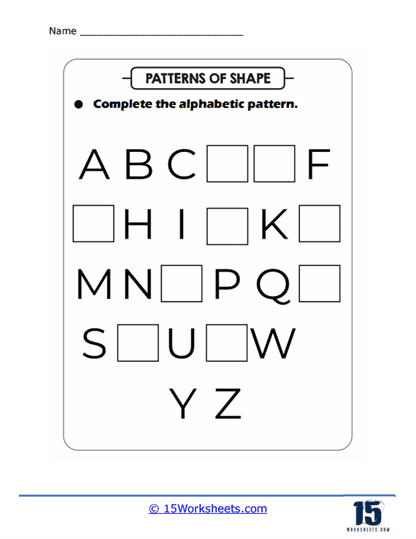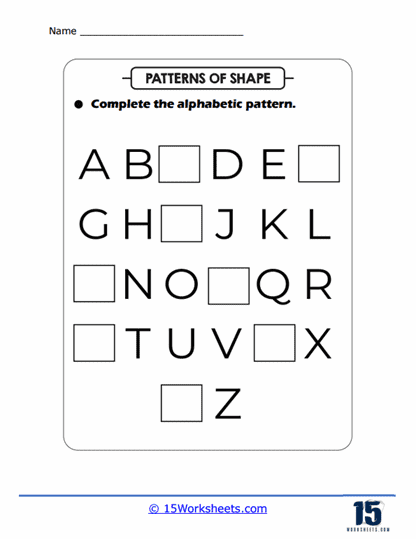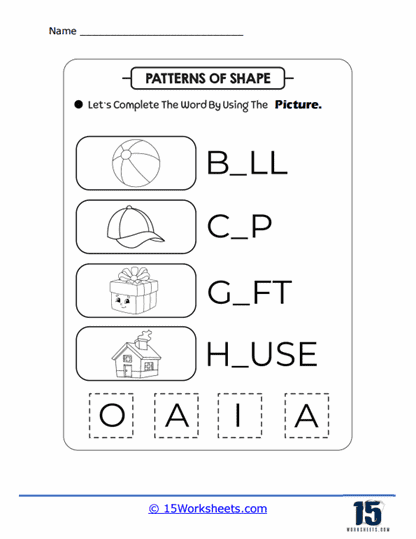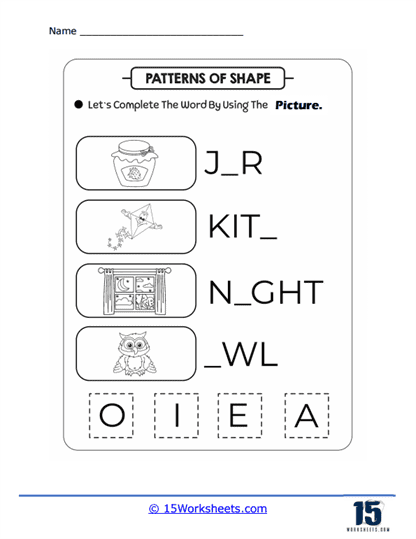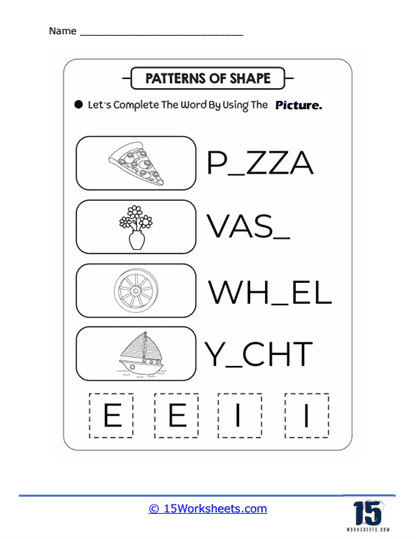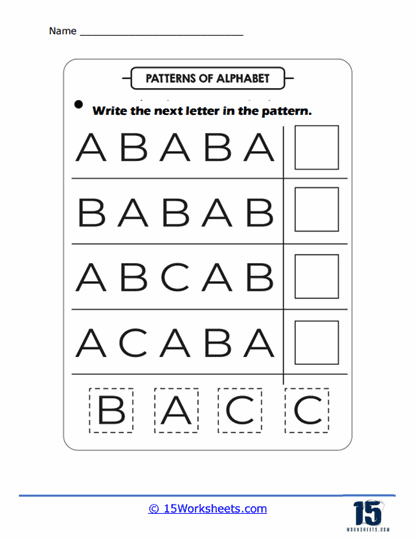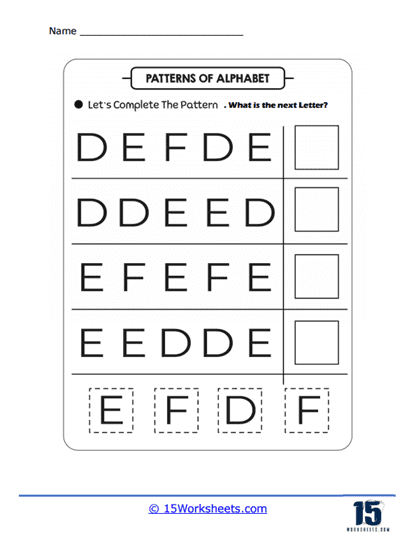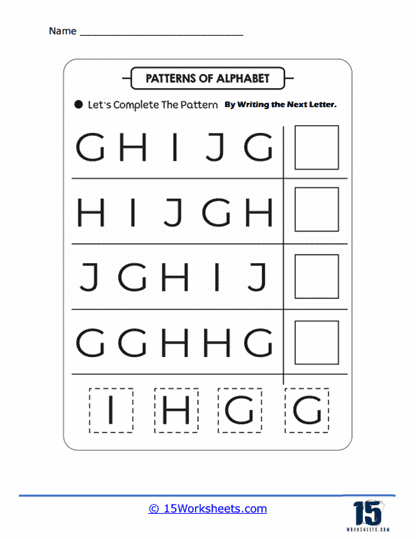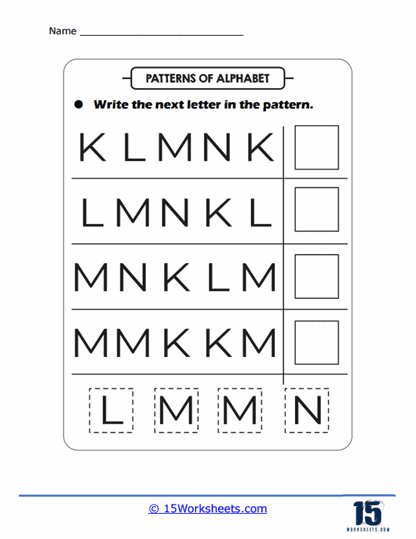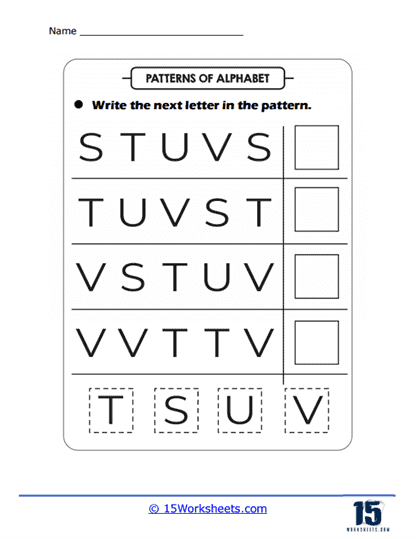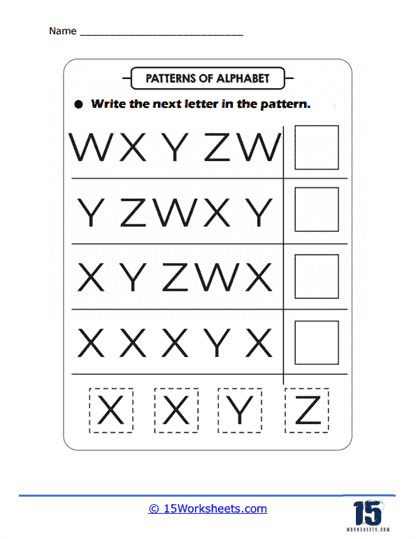Patterns of Letters Worksheets
About These 15 Worksheets
Patterns of Letters Worksheets are essential tools for early childhood education, particularly in the development of language skills in elementary aged children. These worksheets facilitate the understanding of language structure and rules, providing children with an engaging and educational way to learn about the organization and sequence of letters in words.
The foundational concept behind these worksheets is to improve a child’s understanding and recognition of letter patterns and sequences. The English language comprises various patterns that form words and meaning. These patterns can range from simple ones like ‘at’ in ‘cat’, ‘bat’, ‘rat’, or more complex ones like ‘ight’ in ‘light’, ‘night’, ‘right’. By familiarizing children with these patterns, they will be better equipped to identify and comprehend new words, a skill also known as phonetic decoding.
These worksheets contain a variety of exercises aimed at developing this skill. Some worksheets focus on identifying similar patterns in a group of words. Others may ask children to fill in the missing letters to complete a pattern. These exercises stimulate cognitive skills, particularly the recall and application of learned knowledge, and allow children to demonstrate their understanding of patterns in a practical way.
They also enhance the development of spelling skills. By understanding common letter patterns, children can predict and remember the spelling of words more easily. For instance, once a child learns the pattern ‘ight’, they will be able to spell similar words like ‘fight’, ‘bright’, ‘sight’, and many more. This ability not only boosts their confidence in spelling but also encourages independent learning and problem-solving skills.
Additionally, these worksheets are a fantastic tool for vocabulary expansion. As children decode and understand different patterns, they naturally come across new words. With this newfound knowledge, they can understand the context of words in sentences, improving their comprehension skills. Over time, this practice helps them develop a more comprehensive and nuanced vocabulary.
The benefits of these worksheets also extend to handwriting and motor skills. Children are often required to write or trace letters and words in these worksheets, which helps improve their handwriting. It provides consistent and repeated practice that is essential for the development of fine motor skills and hand-eye coordination.
Inclusion is another noteworthy benefit of these worksheets. They cater to different learning styles and levels. For visual learners, the layout and pattern recognition can be an effective way of learning. For children who are more hands-on learners, physically writing out the patterns can provide the tangible experience they need. These worksheets can also be adjusted to different difficulty levels, making them a suitable tool for individualized learning.
Although the importance of these worksheets is evident, it’s essential to remember that they should be used as part of a broader educational strategy. They provide an excellent complement to interactive learning, games, storytelling, and reading. Children should be encouraged to apply the patterns they’ve learned in different contexts, like recognizing them in storybooks or using them in their writing.

